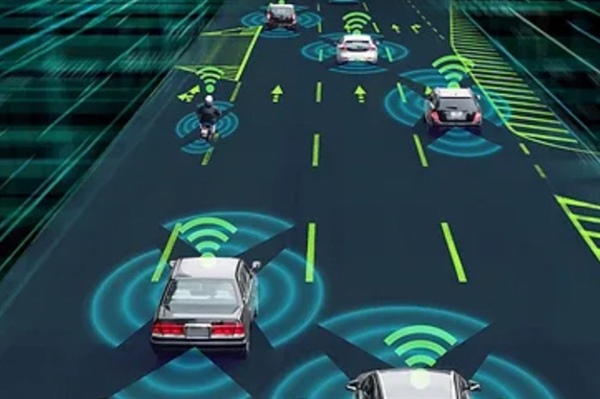What is the Process for Recalibrating ADAS Sensors after Windshield Replacement?

Recalibrating advanced driver-assistance system (ADAS) sensors after a windshield replacement is critical to restoring the accuracy of lane-keeping assist, adaptive cruise control, automatic emergency braking, and other safety features.
When a front windshield is replaced, the precise alignment between cameras or radar units and the vehicle’s Electronic Control Unit (ECU) is disrupted. Without proper realignment, ADAS warnings can shift, sensors may misjudge distances or lane markings, and safety functions can fail to engage as designed.
Across makes and models, following OEM procedures and using both static targets and dynamic road tests, ensures that each sensor meets the manufacturer's tolerances. Kingdom Auto Glass technicians rigorously verify optical and radar calibrations so systems perform reliably under real-world conditions.
In this article, we’ll explore the five key questions drivers and technicians ask most often about the recalibration process.
Which Vehicles Require ADAS Recalibration After Windshield Replacement?
Any vehicle equipped with forward-facing cameras, radar units, or lidar sensors mounted on or near the windshield will require ADAS recalibration once the glass is replaced.
Modern safety suites introduced around 2015—such as lane-keeping assist, adaptive cruise control, automatic emergency braking, or traffic sign recognition—depend on precise sensor alignment to function correctly.
Major manufacturers that explicitly mandate recalibration include European brands like Mercedes-Benz, BMW, Audi, and Volvo; Asian brands such as Toyota/Lexus (Toyota Safety Sense), Honda/Acura (Honda Sensing), and Subaru (EyeSight); and American brands including Ford/Lincoln (Co-Pilot360) and General Motors (Super Cruise).
Virtually all ADAS-equipped models in these lineups require their sensors to be realigned after any windshield replacement.
Without proper ADAS calibration, features such as lane departure warnings and collision avoidance brakes can become unreliable or inactive.
Impacts of Improper ADAS Recalibration on Driving Safety
Misaligned or uncalibrated ADAS sensors can generate false-positive warnings, such as phantom lane-departure alerts, or fail to detect genuine hazards. Safety functions may deactivate automatically if the system senses an alignment fault, leaving drivers without critical backups when they expect them.
Examples include a vehicle drifting within its lane despite lane-keep assist being “on,” adaptive cruise control failing to maintain a safe following distance, or automatic emergency braking not engaging in a sudden stop scenario. These failures undermine driver confidence and increase the risk of collisions.
In worst-case scenarios, improper recalibration can raise crash risk, void manufacturer warranties, and expose drivers to liability if a safety system omission contributes to an accident.
Recognizing Signs That ADAS Sensors Need Recalibration Post Glass Replacement
Following windshield replacement, look for illuminated ADAS warning lights on the instrument panel; camera, radar, or generic fault symbols often indicate sensor misalignment. Such errors typically appear immediately or within the first few miles of driving.
Other symptoms include erratic lane-departure or forward-collision alerts (warnings when the vehicle is properly centered or no warnings when veering), unpredictable adaptive cruise control behavior, and failure of pre-scan diagnostics when connected to an OEM scan tool.
Any persistent error message or inconsistent safety-feature performance after a glass swap should prompt a professional calibration check before continued use.
Technologies Employed for ADAS Sensor Recalibration in Hugo, MN
In Hugo, Minnesota, certified facilities employ both static and dynamic calibration tools to restore ADAS accuracy. Static calibrations use precision target fixtures—such as Opti-Aim® laser-aligned boards—positioned at exact distances and angles relative to the vehicle.
Technicians interface specialized diagnostic platforms (e.g., Launch or OEM scanners) with the vehicle’s ECU to verify alignment parameters, clear fault codes, and confirm sensor readings fall within manufacturer-specified tolerances.
Dynamic calibration procedures follow, driving the vehicle along a level, straight course to allow radar-based systems to self-adjust under real-world conditions, ensuring both camera- and radar-based sensors operate harmoniously.
Variations in ADAS Recalibration Processes Across Vehicle Models
Recalibration protocols differ substantially by make, model, and sensor architecture. Some vehicles require both static target calibration and road-test verification, while others necessitate only a dynamic drive-off procedure to align the sensors.
Camera-heavy systems (focused on lane-keep and traffic-sign recognition) demand precise optical alignment, whereas radar-dominant adaptive cruise setups prioritize correct sensor tilt and range calibration. Multi-sensor vehicles—those with side-mirror blind-spot cameras or bumper-mounted radars—entail multi-point procedures to align each unit.
Technicians must consult the service manual for each model and the OEM calibration specifications. Detailed procedures and approved equipment lists are available from expert installers, ensuring every vehicle returns to the road with factory-level safety performance.
How Kingdom Auto Glass Can Help You with ADAS Recalibration
Kingdom Auto Glass offers expert ADAS recalibration services after windshield replacement, ensuring features like lane-keeping assist, adaptive cruise control, and automatic emergency braking perform precisely.
Our certified technicians utilize OEM-level calibration tools and adhere to the manufacturer's procedures to precisely realign your vehicle’s cameras and radar sensors to exact tolerances.
If you’ve encountered ADAS warning lights, inconsistent safety-system behavior, or simply want to verify your vehicle’s safety performance, call us at 651-440-2213 or contact us; our team is ready to assist.